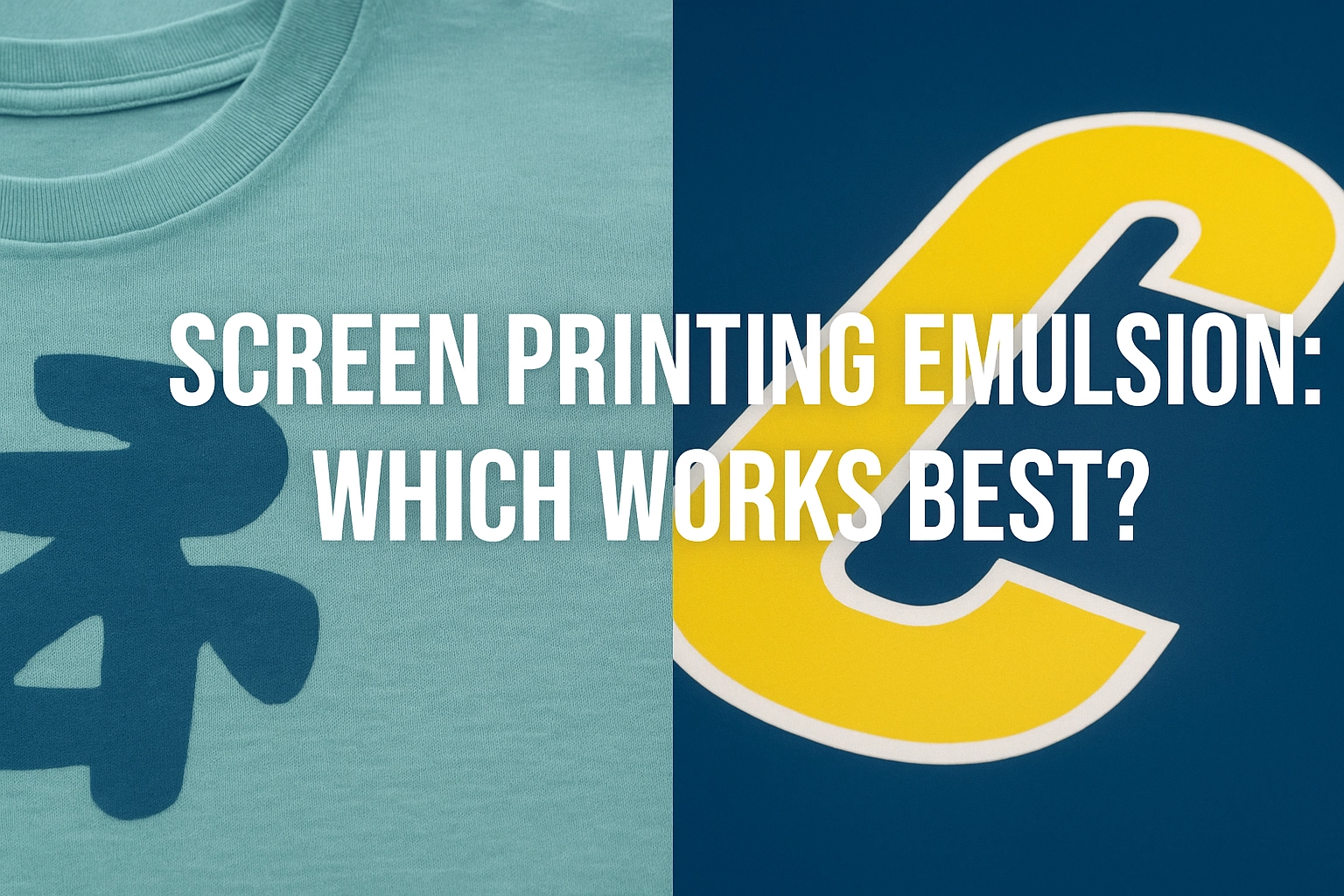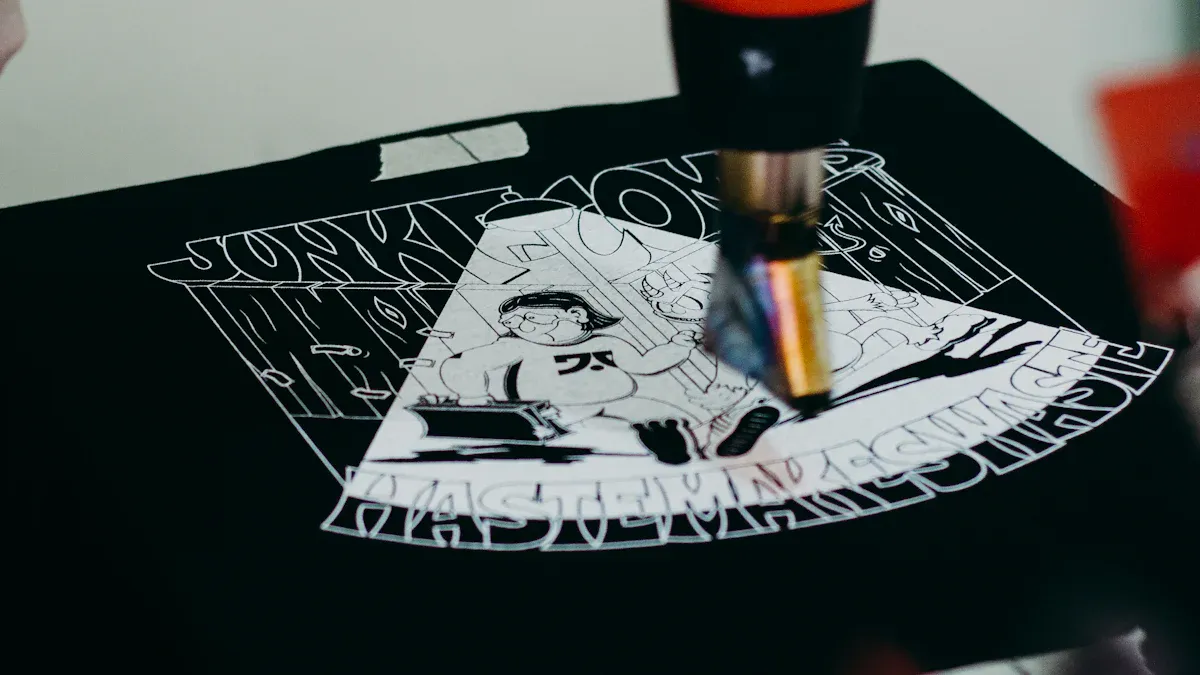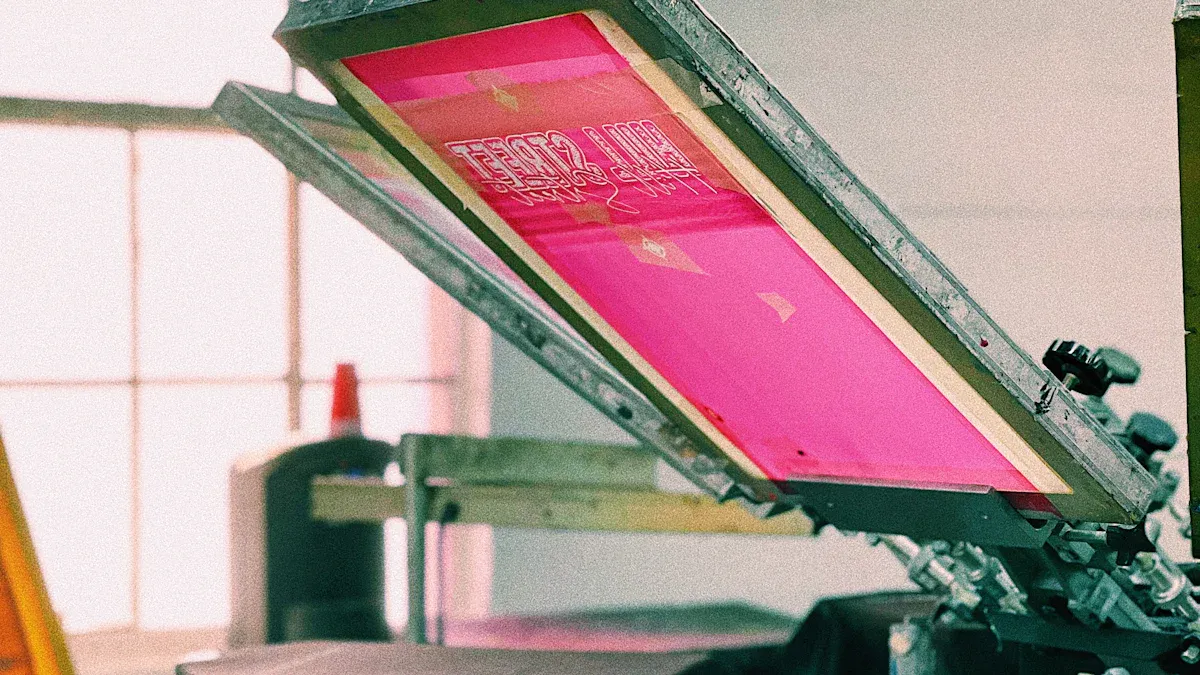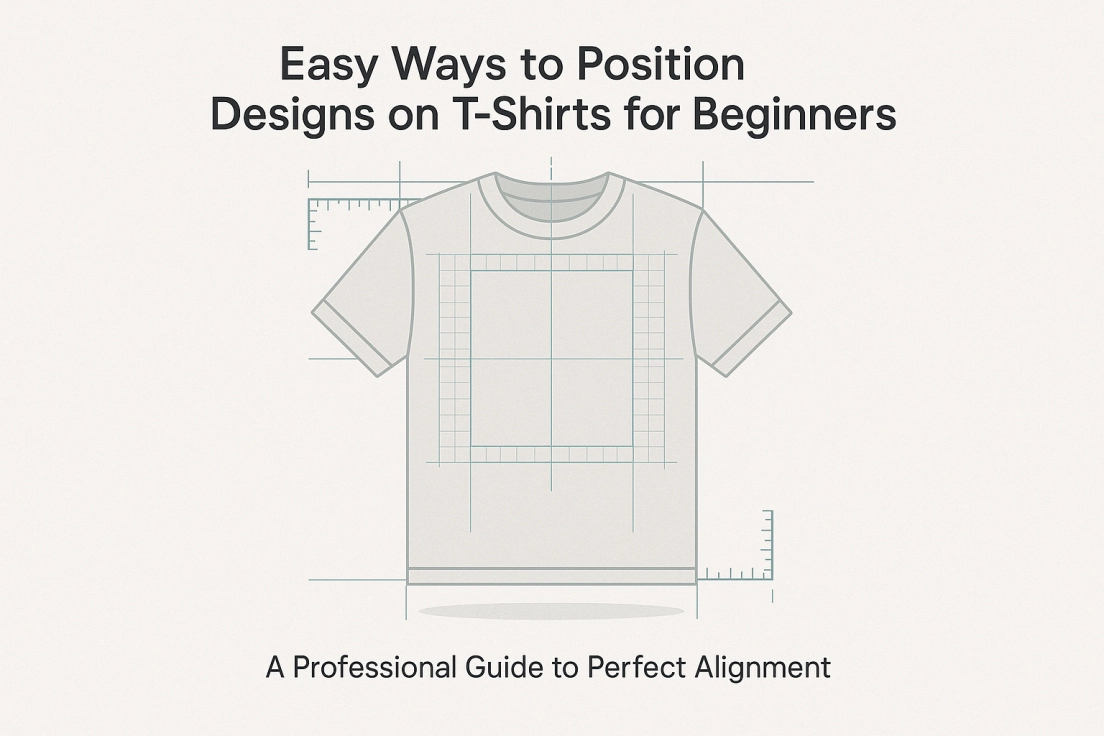A Guide to Screen Printing Machines | Screen Printing Machines FAQ
Intro to Screen Printing Machines
How It Works
Screen printing is where art meets hardcore engineering, using a stretched screen to transfer ink onto stuff. Picture a fine mesh where some spots are blocked by a pattern, and others let ink pass through to the material below, nailing sharp designs. The screen’s usually polyester or nylon, coated with light-sensitive emulsion to form pattern and non-pattern zones. During printing, you or a machine use a squeegee to push ink evenly, letting it seep through open holes to copy the pattern clean.
Sounds simple, but it’s got layers of techy details. Screen tension is a big deal for print quality: too loose, and edges blur; too tight, and the mesh might rip. You’re aiming for 20-30 newtons per centimeter, and high-end gear uses lasers to keep it tight. The squeegee angle—60-75 degrees is the sweet spot—and pressure matter big time. Too light, and ink won’t transfer right; too heavy, and you’ll get bleed. Modern screen printing machines lean on servo motors and sensors for pinpoint control, especially in fully automatic setups, locking in crazy consistency every run.
Compared to digital printing, screen printing lays down thick ink for bold colors and a unique feel. It’s unbeatable for durability or special effects, like beefy outdoor signs or raised T-shirt designs. It’s versatile as hell with ink choices: water-based, plastisol, UV-cured, even metallic or glow-in-the-dark inks work on everything from fabric to metal. Whether you’re going green with water-based ink or printing circuit boards with conductive stuff, screen printing’s got your back.
Where It’s Used
Screen printing’s reach is wild, hitting any industry needing patterns or functional coatings. In apparel, screen printers for shirts are the rockstars, churning out custom tees, sportswear, and fashion pieces. Plastisol ink, with its vivid colors and wash-proof vibe, is king for both bulk runs and small-batch custom jobs. A startup in LA dropped limited-edition tees with screen printing, and the designs held up crisp after 50 washes, earning serious street cred.
Electronics lean hard on screen printing too. For printed circuit boards and touchscreens, conductive ink lays down micron-level paths through high-precision screens, powering smartphones and tablets. Industrial screen printing demands insane accuracy, with top machines rocking laser alignment systems to keep errors under 0.01 millimeters. It’s the unsung hero of high-tech production.
Beyond that, screen printing’s all over advertising, packaging, and art. Think fancy labels on glass bottles, car dashboard markings, or limited-edition prints by artists. Commercial screen printing’s cost-effectiveness and versatility make it a go-to for businesses. One packaging outfit boosted a high-end liquor brand’s vibe with metallic-effect labels done via screen printing.
Types of Screen Printing Machines
Screen printing machines come in manual, semi-automatic, and fully automatic flavors, each with its own strengths based on automation and output. Here’s the lowdown on their builds, perks, and limits to help you pick the right one.
Manual Screen Printing Machines
Manual screen printing machines are perfect for newbies and art buffs, running on pure elbow grease. They’re basic: a frame holding the screen, a movable squeegee, and a printing platform. You slap the material—like a tee or paper—on the platform, line up the screen by hand, and push ink through with the squeegee to print.
These rigs shine for their low cost, usually a few hundred to a grand, and total flexibility. Bold T-shirt designs or experimental art prints? No problem. They’re great for small runs or multi-color jobs where each color gets its own alignment and pass. Tons of indie designers cut their teeth on these, tinkering to nail their signature style.
Downsides? Quality hinges on your skill—uneven squeegee pressure can blur patterns, and rushing screws up details. Speed’s slow, cranking out maybe a few dozen pieces an hour, so big orders are a slog. Long sessions can wear you out, messing with consistency. Still, if you’re strapped for cash or chasing that handmade vibe, a manual screen printing machine’s a solid start.
Semi-Automatic Screen Printing Machines
Semi-automatic screen printing machines blend mechanical help with human touch, ideal for small-to-mid-sized businesses. The platform often has a vacuum system to keep materials flat, and the squeegee and floodbar are powered by pneumatics or electrics, easing the grunt work. You still place the material, align it, and swap screens for multi-color jobs.
These machines boost efficiency and precision big time. For T-shirt printing, a semi-automatic press can pump out hundreds of pieces an hour, perfect for commercial screen printing gigs. Mechanical controls keep squeegee pressure and speed steady, cutting human error, especially in four-color screen presses where spot-on color layering is clutch. A New York print shop slashed delivery from a week to three days with one of these, and customers ate it up.
Price tags range from a few grand to tens of thousands, depending on extras like multi-station setups or auto-alignment. Maintenance is manageable—clean screens and squeegees regularly, and the mechanical bits are built tough. Limits? You’re still hands-on, so it’s not fully automated, and it might fall short for ultra-precise needs like electronics. All in all, semi-automatic gear’s a sweet spot for growing shops.
Fully Automatic Screen Printing Machines
Fully automatic screen printing machines are the top dogs, built for huge output and tricky jobs. They’re a full system: auto-feeding, printing, drying, and collecting, with you just tweaking settings and watching. Modern ones rock touchscreen panels, laser alignment, and multi-station rotary tables for seamless multi-color work.
In apparel, automatic screen printers for shirts churn out thousands of pieces hourly, dominating big production lines. In industrial settings, they print circuit boards, glass panels, or car parts with micron-level precision. Some high-end models even mix in digital inkjet tech for sharper details. A German auto supplier used one for dashboards, keeping pattern errors under 0.02 millimeters for safety-critical parts.
The upside’s efficiency and consistency. Servo-driven squeegees nail the same specs every time, ideal for pro-grade shirt printing or strict quality control. But they’re pricey—tens to hundreds of thousands—and maintenance ain’t cheap, with regular swaps of precision parts and system calibrations. They’re complex too, needing proper training to run.
For businesses chasing scale, an automatic press cuts long-term costs by ditching manual labor. Its versatility handles everything from textiles to hard surfaces, ready for whatever the market throws next.
Core Build and How It Runs
A screen printing machine’s magic comes from its tight-knit components: the screen system, squeegee and floodbar, and printing platform with alignment gear. They work together to transfer designs from screen to material, and every part’s design impacts quality and speed.
Screen System
The screen system’s the heart of screen printing, holding the pattern and controlling ink flow. It’s a frame—aluminum or wood—with a stretched mesh of polyester, nylon, or stainless steel. Mesh count sets the hole size, driving print precision:
- Low mesh count (80-120): Big, blocky patterns, like chunky T-shirt designs.
- High mesh count (200-300): Fine details, like circuit board traces.
Screen prep means coating with light-sensitive emulsion and exposing it. UV light hardens the emulsion, and unexposed bits wash away, leaving open pattern zones. Tension’s critical at 20-30 newtons per centimeter for sharp edges. In industrial screen printing, auto-stretchers and lasers keep tension on point.
Screen quality’s make-or-break. Slack mesh can leak ink, ruining details; heavy use wears it out, so swap it regularly. Manual users check screens by hand, while automatic rigs might have sensors to flag issues real-time.
Squeegee and Floodbar
The squeegee and floodbar are the dynamic duo, handling ink spread and transfer. Squeegees, made of polyurethane or rubber, range from 60-80 Shore A hardness:
- Hard squeegees: Smooth surfaces like glass.
- Soft squeegees: Flexible stuff like textiles.
Squeegee angle—60-75 degrees—and pressure need dialing in. Too much pressure pushes excess ink; too little starves the transfer. The floodbar sweeps leftover ink back to the screen’s starting line, built wider and softer to avoid scratches. In semi or fully automatic machines, servo motors keep speed and pressure locked in.
Squeegee wear’s a pain. Polyurethane blades can dull after thousands of prints, messing up ink spread. Check and replace them often. Ink viscosity plays a role too—thick ink needs harder squeegees or slower speeds.
Printing Platform and Alignment
The printing platform and alignment system keep materials steady and positioned right. Platforms, usually aluminum or steel, need flatness within 0.1 millimeters. Vacuum systems pin down thin materials with tiny holes, while T-shirt printing might use sticky coatings.
Alignment’s everything for multi-color jobs. Each color layer needs to match the last, with errors under 0.05 millimeters. Manual setups rely on eyeballing it with pins or markers. Automatic presses use lasers or CCD cameras to auto-correct deviations. In four-color screen presses, cameras catch tiny misalignments live, keeping patterns crisp.
Platform material depends on the job. Glass printing might need heated platforms to cure ink fast; textiles want breathable ones. Clean platforms regularly to ditch ink residue or dust. Alignment rails and servo motors need lube to stay smooth long-term.
Buying Guide for Screen Printing Machines
Picking the right screen printing machine is key to nailing quality and output. This guide breaks down how to match your biz needs, material types, and budget to the perfect rig.
Key Specs to Watch
When shopping, zero in on these must-have specs:
- Print area: Marked by max screen size, like 24×36 inches. Manual rigs are great for small stuff; automatic ones handle big sheets.
- Print speed: Manuals hit dozens per hour, semi-automatics hundreds, automatics thousands. High-speed needs tight alignment to avoid slips.
- Precision and repeatability: Servo motors and laser alignment keep things consistent, with alignment errors under 0.05 millimeters, critical for four-color jobs.
- Screen tension control: Top gear holds 20-30 newtons per centimeter for sharp patterns.
- Power and footprint: Automatic machines suck 10-20 kilowatts and need dozens of square feet, so check your power and space.
Test the machine in-person and grab a spec sheet to confirm it fits your production. One startup tested a semi-automatic’s multi-color chops to make sure it could handle tricky patterns their clients wanted.
Materials and Ink Compatibility
Screen printing’s strength is its insane range of materials and inks. Your material type drives the choice:
- Textiles: Think tees or tote bags—flexible screens and looser mesh do the trick.
- Hard surfaces: Glass or metal need high-tension screens and sturdy platforms.
Ink choice ties to the material:
- Water-based ink: Eco-friendly, great for textiles, but dries slow.
- Plastisol ink: Bright and tough, a T-shirt printing fave.
- UV ink: Cures fast, perfect for glass or plastic, needs UV lamps.
- Conductive ink: For circuit boards, demands high-precision gear.
Your machine should handle ink switches. High-end automatics have auto-cleaning to cut downtime. Test how the rig handles your material—check ink adhesion and pattern clarity. Think ahead about upgrades, like multi-color modules or dryers, to grow with your biz.
FAQs
Blurry prints, clogged screens, and alignment slips are common headaches in screen printing. Here’s how to fix them, with real-world tips to get you back on track.
Fixing Blurry Prints
Blurry patterns—fuzzy edges or bleeding colors—can stem from the screen, ink, or squeegee:
- Screen tension: Aim for 20-30 newtons per centimeter; too low causes leaks. Use a tension meter to check and tweak.
- Ink viscosity: Water-based ink that’s too thin spreads—add thickener and test. Plastisol needs proper mixing ratios.
- Squeegee setup: Keep the angle at 60-75 degrees with balanced pressure. Check for worn blades and swap if needed.
- Environment: Humidity above 70% slows drying—throw in a dehumidifier.
One clothing shop dialed in the squeegee angle and swapped to a higher mesh count screen, dropping blurry prints from 20% to 2%, making customers stoked.
Clearing Clogged Screens
Clogged screens cause missing patterns, often from dried ink or bad choices:
- Ink management: Plastisol can harden if it sits—stir every 20-30 minutes and wipe the screen with a damp cloth.
- Screen cleaning: Use the right cleaner—soapy water for water-based, special solvents for UV ink. Soft brushes for manual cleaning; automatics can spray cleaner on a timer.
- Prevention: Match ink to mesh count and keep shop temps at 20-25°C.
A commercial printer tweaked ink formulas and upped cleaning rounds, cutting downtime from 10 hours a week to 2.
Tuning Print Precision
Alignment slips wreck multi-color jobs:
- Platform flatness: Keep errors under 0.1 millimeters—wipe the platform before each run.
- Alignment system: Manuals need high-contrast markers; automatics require laser or CCD camera calibration.
- Screen gap: Set 1-3 millimeters—higher for textiles, lower for hard stuff.
An electronics shop fine-tuned gaps and laser alignment, slashing precision errors from 0.1 to 0.02 millimeters, cutting scrap by 15%.
Maintenance and Care
Daily Cleaning
Daily cleaning keeps ink residue and dust from tanking quality:
- Screens: Clean post-print with the right solvent, brush gently, rinse, and blow dry.
- Platform: Wipe with isopropyl alcohol to stay flat. Check vacuum holes and clear clogs.
- Squeegee and floodbar: Soak in solvent, wipe dry, and inspect blade wear.
One commercial shop’s daily cleaning dropped defect rates from 10% to 3%.
Wear-Part Replacement
Wear parts include screens, squeegees, floodbars, and mechanical bits:
- Screens: Polyester mesh lasts 5,000-10,000 prints—swap when tension dips below 15 newtons per centimeter.
- Squeegees and floodbars: Polyurethane blades need checking after 2,000-5,000 prints, sooner for hard materials.
- Mechanical parts: Calibrate servo motors and sensors every 6-12 months.
A clothing shop’s replacement log slashed downtime by 75%.
Long-Term Storage
For long breaks, protect the machine:
- Cleaning: Pull screens, clean the platform, and apply anti-rust oil. Store squeegees separately.
- Environment: Keep temps at 15-25°C, humidity under 60%. Power up for 5-10 minutes monthly.
- Restart: Recalibrate tension and alignment, lube rails, and check wiring.
Stick to this, and your machine’s ready to roll after downtime, lasting longer.





